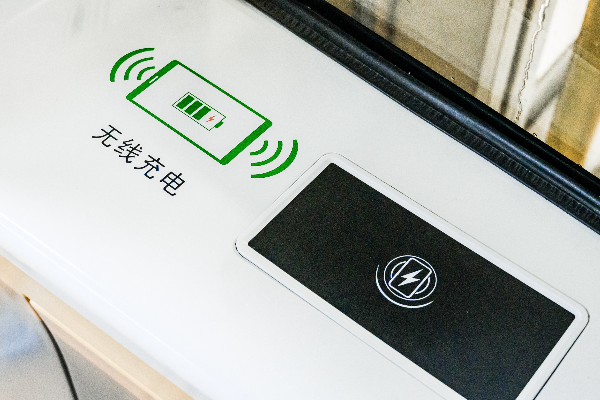 Local News
Local News
Expats take a selfie during a recent test ride on the Pingshan section of Metro Line 14 to experience the comfort and convenience of the train service in advance. The line is scheduled to open to the public Friday. It is the first Metro line in Pingshan District. Zhao Bowen
Metro Line 14, a fully automated line that runs through Pingshan, Longgang, Luohu and Futian districts, will start operation Friday, bringing Pingshan closer to urban CBD.
The 50-kilometer line, the first in Pingshan, starts from Gangxia North Station and ends in Shatian Station in Pingshan, and has 18 stations.
The line adopts China’s self-developed autonomous train technology, and the train carriages will be equipped with lateral seats and offer wireless mobile phone charging service, according to Shenzhen Metro Group, the operator, Thursday.

A wireless mobile phone charging area inside a Metro Line 14 train. Photos by Sun Yuchen
It is also equipped with a GoA4 transport system, the world’s highest-standard driverless train operation system, and is designed at a maximum speed of 120 kilometers per hour.
By applying technologies such as train sleep wakeup, obstacle/derailment detection and remote reset and rethrowing, full-time, all-weather driverless trains can be realized.
The line’s signaling system can achieve around-the-clock uninterrupted service, improving operational efficiency and transport capacity. At the same time, the trains’ stop time and intervals are shortened, thereby improving the line’s running speed, punctuality rate and comfort during the ride, according to the operator.

A driverless cabin in a Metro Line 14 train.
The trains have a checking system that can conduct monitoring, alarms, diagnosis, assessment and analysis over the line’s operation system. The trains can also conduct automated safety checks, including voluntary or involuntary detection of objects, collision prevention and derailment checks.
The line adopts a facial recognition system for ticket payments, which allows passengers to scan their faces on a tablet-sized screen mounted on the entrance gate. The device automatically deducts the fare from passengers’ linked accounts.
Passengers need to register to authorize facial recognition at the ticket vending machines before using the service. Free riders are provided with another alternative for the use of hand recognition.
Driverless technologies were piloted on Line 20, a rapid transit rail line connecting Terminal 4 of Shenzhen Bao’an International Airport and Shenzhen World Exhibition & Convention Center, at the end of 2021. The technologies will also be applied to lines 12, 13 and 16.
Also on Friday, three new hubs along the line — Gangxia North Comprehensive Transport Hub in Futian District, Universiade Comprehensive Transport Hub in Longgang District and Huangmugang Comprehensive Transport Hub in Futian District — will be operational.
As a mega hub where four Metro lines meet, the Gangxia North Comprehensive Transport Hub will offer transfers for lines 2, 10 and 14, and Line 11’s under-construction Phase II, which will be put into use by 2025. In the future, it will be connected to Line 1’s Gangxia Station through underground business streets.
The Huangmugang Comprehensive Transport Hub will offer interchange between lines 7, 14 and the planned Line 24. The station adopts a photovoltaic power generation system that can generate 379,600 kWh a year and reduce 378.4 metric tons of carbon emissions, saving 152 metric tons of standard coal.
The Universiade Comprehensive Transport Hub will offer transfer for lines 3, 14, 16 and the Shenzhen International Airport-Daya Bay Intercity Railway. It will enhance the connectivity between the city’s eastern area and Futian CBD.